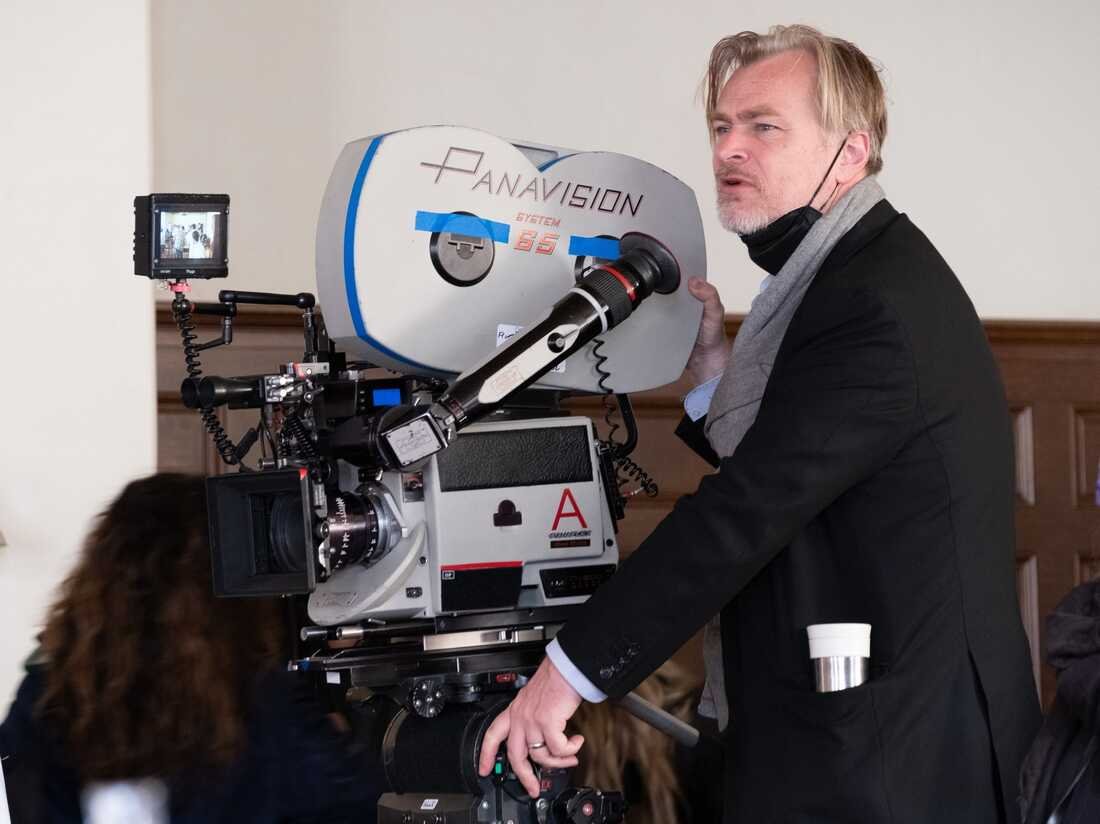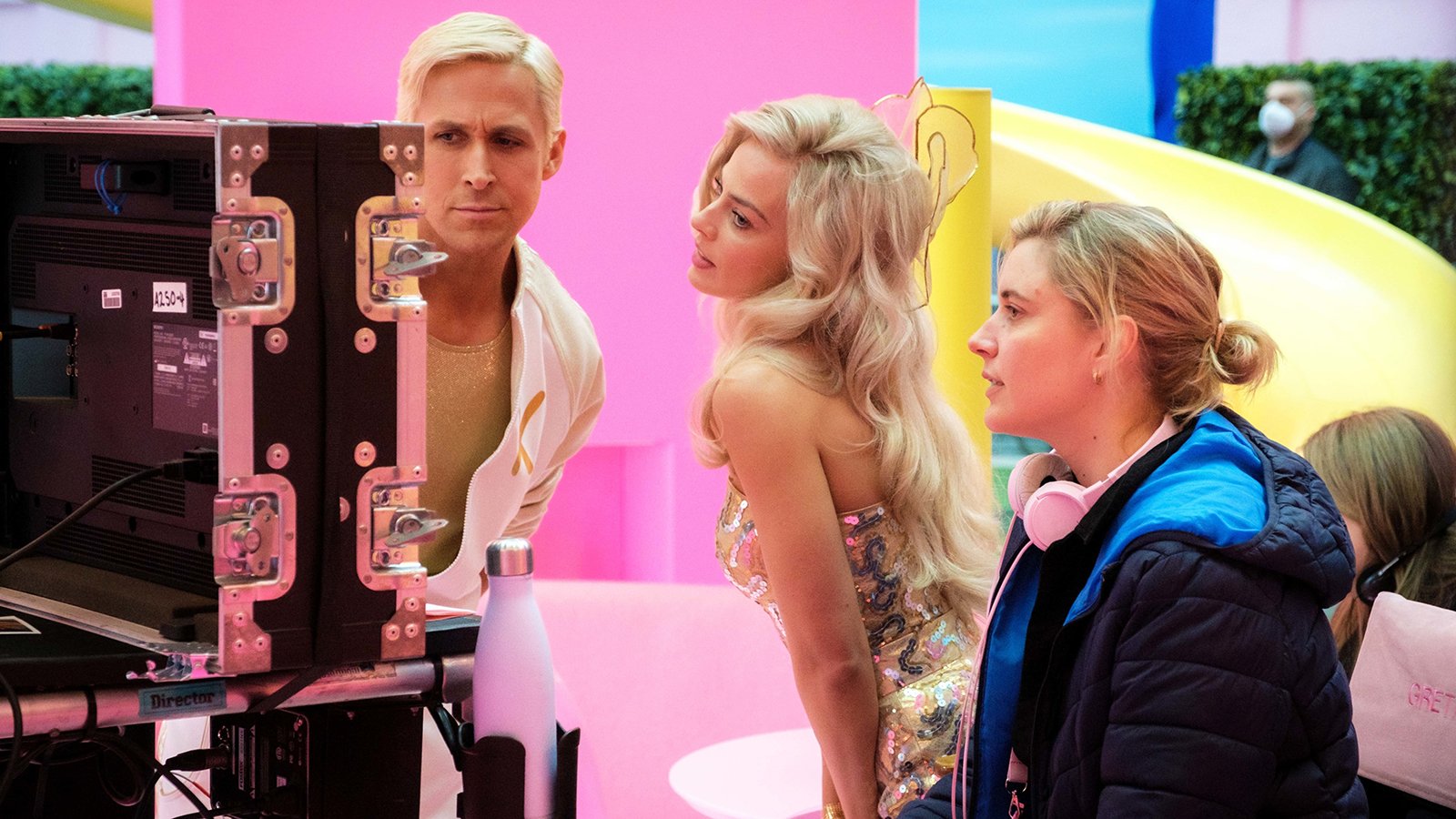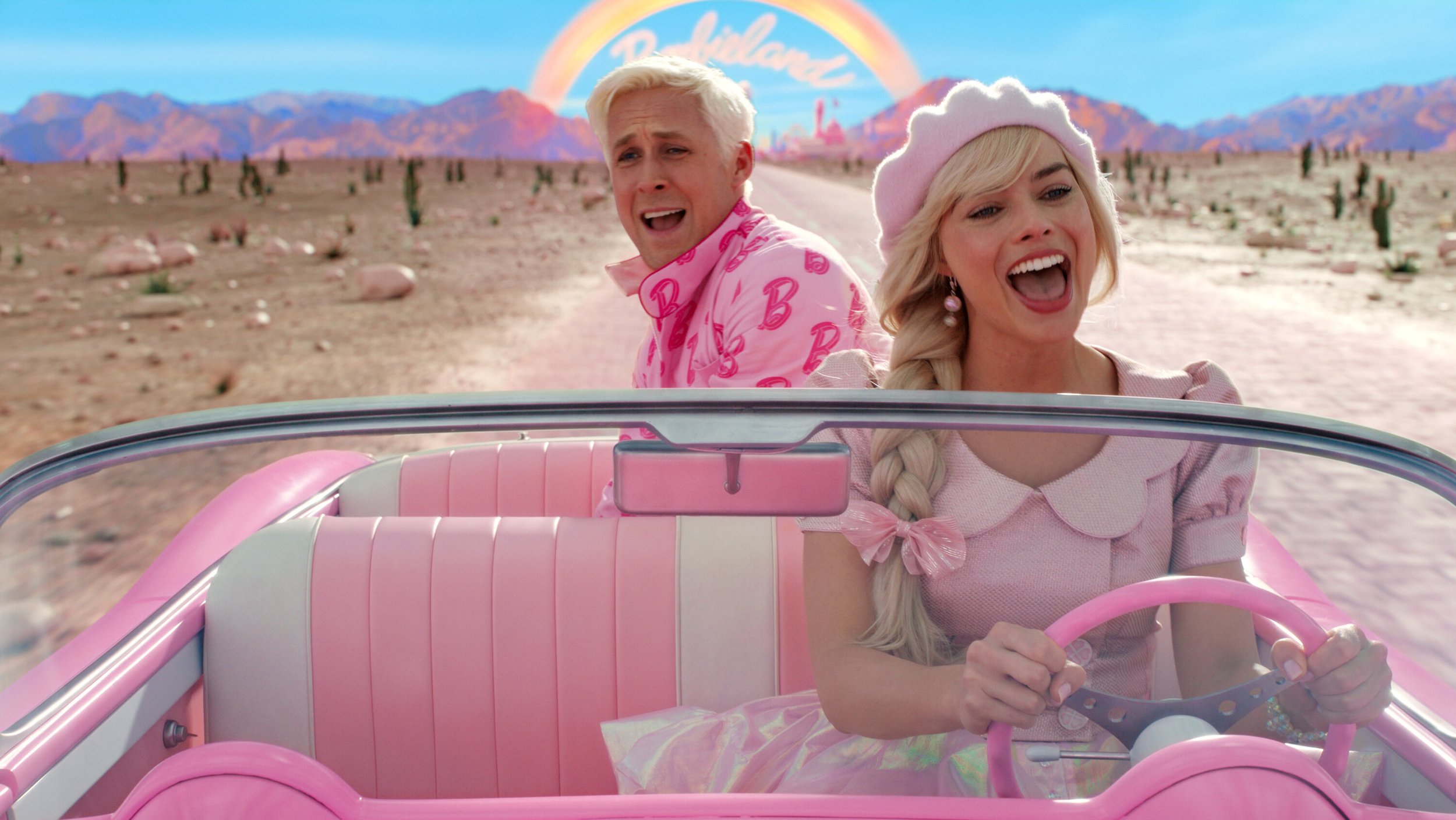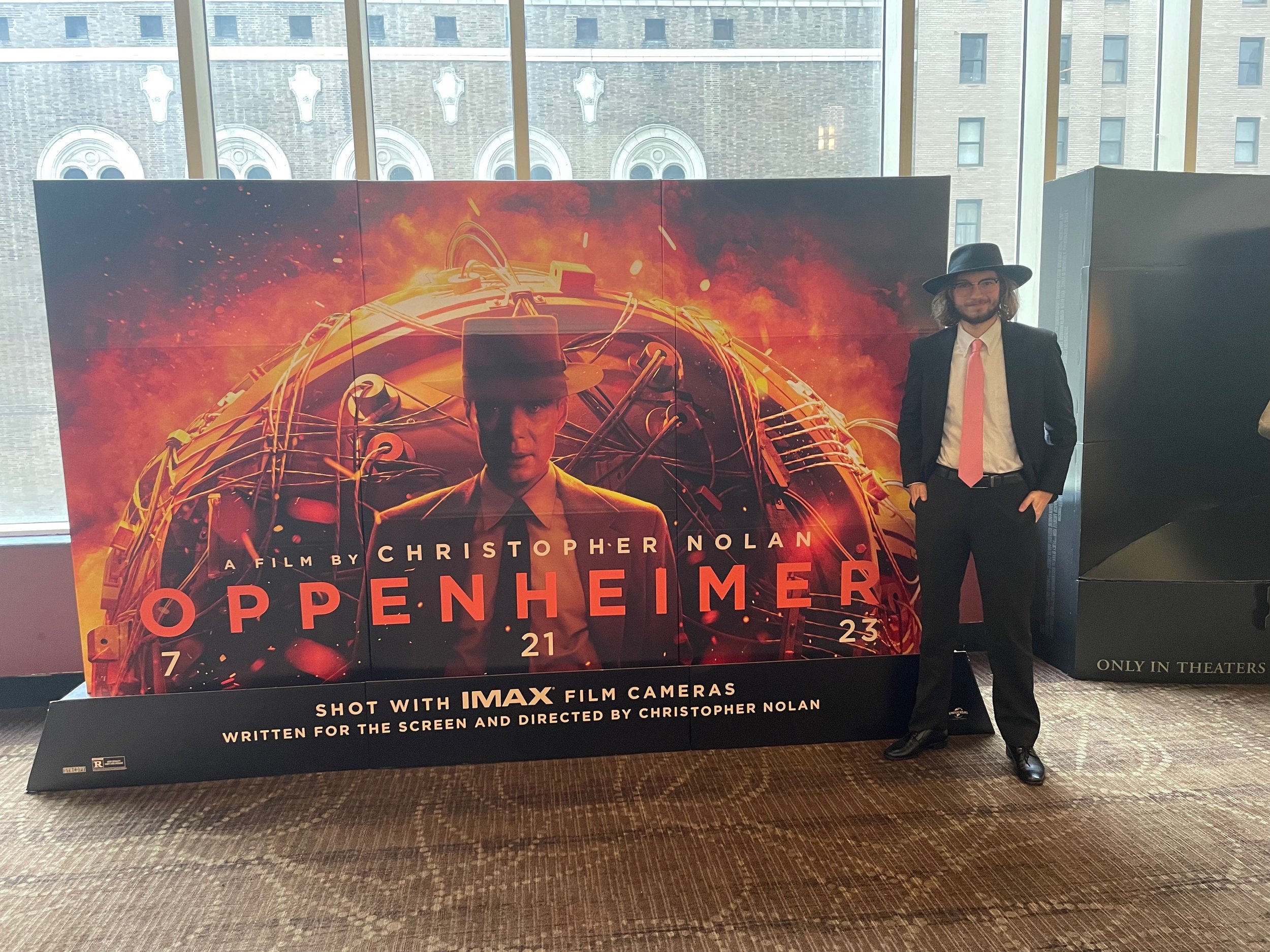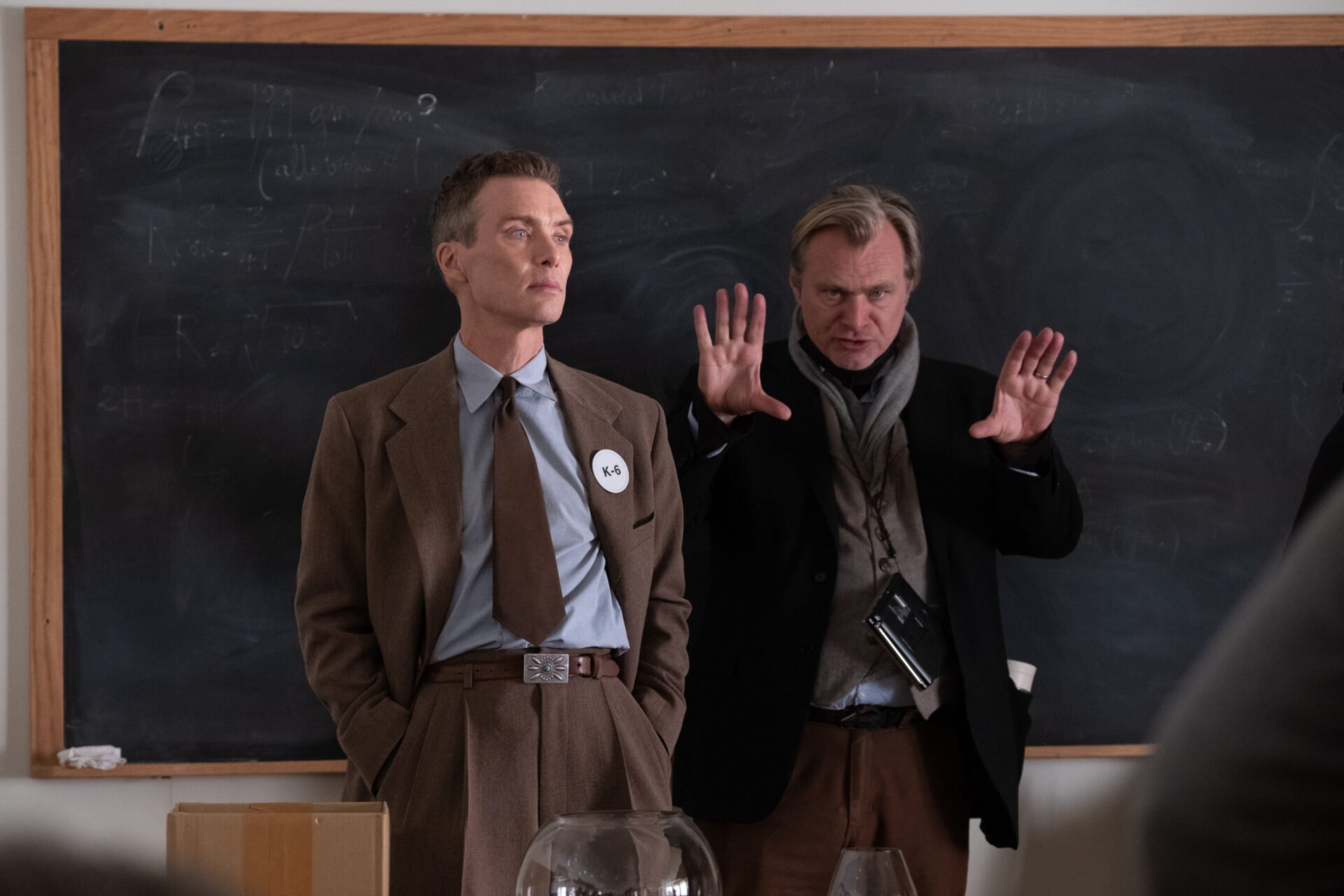“Barbenheimer” and the Potential Ressurgence of Original, Big-Budget Studio Pictures
Never in my wildest dreams could I have predicted that “Barbenheimer,” the double feature event combining the films “Barbie” and “Oppenheimer,” would have become the cinematic event of the year.
At the beginning of the year, when I was looking at the slate of films for 2023, I saw that Christopher Nolan’s “Oppenheimer” and Greta Gerwig’s “Barbie” were going to be released on July 21. I thought “that's got to be a hell of a double feature” as a joke, convinced that very few people would be crazy enough to see both films on the same day. I was proven wrong. When “Barbie” and “Oppenheimer” were released on the same day, it became a cultural phenomenon.
In a summer season full of superhero films and other assorted franchise entries, the two biggest money makers couldn’t have been further from what audiences had grown accustomed to. In one corner, a dialogue-driven WWII epic about the creation of the atomic bomb with black-and-white sequences and a three hour runtime. In the other corner, a film based on an iconic doll with deep themes of feminism and existentialism. However, instead of one film defeating the other in a metaphorical game of boxing, both films lifted each other up with a massive fan-driven social media campaign, dubbed “Barbenheimer,” to see both films on the same day. Now, just a month-and-a-half later, both films have already smashed box office records, garnered critical praise and have become the cinematic event of the year with “Barbie” becoming the highest grossing film of 2023 and “Oppenheimer” not far behind in third place.
When we look back on this cultural event, it’s important to know that no one in the industry came up with “Barbenheimer.” After all, in this toxic world of unfettered capitalism that Hollywood has become, why would one studio want to help out another? More specifically, why would Warner Bros. Pictures want to bolster the box office of a Christopher Nolan film? You see, Christopher Nolan was one of the studio’s most prestigious names. Not only did Christopher Nolan revive Batman for the studio with the “Dark Knight Trilogy” but the studio had financed every one of Nolan’s films from 2002’s “Insomnia” to 2020’s “Tenet.” This partnership resulted in some of the finest films of the 21st Century including three Batman movies, “Inception,” “Interstellar” and “Dunkirk.”
So, what happened? Well, COVID-19 for starters. With theaters shut down and people staying at home, Warner Bros. (as well as the other studios) had a backlog of new films without a safe place to screen them. So, many studios either chose to wait until the theatrical experience could be safe or to release them on streaming. Warner Bros. even proposed that, during 2021, they would simultaneously release their films in theaters and on their streaming service HBO Max (now called Max). This raised a lot of questions in such an uncertain time. Would this be the norm? Would the theatrical experience mean nothing to studios anymore?
Nolan was insistent that “Tenet” be released in theaters and, as the director/writer/producer of the film, he certainly had a lot of clout to get that done. So, “Tenet” was released in 2020 and did as okay as it could have given the circumstances. With a budget of $205 million, the film made $365 million with projected losses for Warner Bros. between $50 million and $100 million. As someone who saw the film in theaters three times (if you’ve seen the film, you’ll know why I went to the cinemas three times to see it), I can understand why Nolan needed “Tenet” to have a theatrical release. Like all of his films, it’s a true spectacle.
Following disagreements with Warner Bros., Christopher Nolan left the studio to make “Oppenheimer” with Universal Pictures.
Between a resurgence of COVID-19 cases that winter and a hesitance by the public to go to the cinema, it was clear that pre-pandemic box office was unthinkable in this new reality. If anything, the box office performance of “Tenet” was an indicator to Warner Bros. that their plan to release films during 2021 was worth pursuing. Warner Bros. went forward with their plan and released all of their titles, including “Dune Part One,” “Godzilla vs. Kong,” “Mortal Kombat,” “Judas and the Black Messiah” and “King Richard,” in both theaters and on HBO Max at the same time.
Despite Warner Bros. promising that this plan would only be used during 2021 (a promise they did keep), Nolan had had enough. He saw this method as an insult to cinema and I can’t say that I disagree with him. As much as I love having so many titles at my disposal with the world of streaming, films should be experienced in a theater and there’s no way to change my mind on that. After nearly two decades of working with Warner Bros., Nolan left the studio and decided that his next film, a biopic about Dr. J. Robert Oppenheimer, would be financed and distributed by Universal Pictures with a 2023 release year. Nolan would have complete control with his film on a level given only to the most prestigious filmmakers, a level of control reminiscent of the New Hollywood of the 1970s.
Whether it was out of the general spirit of competition or a more personal form of vindictiveness, Warner Bros. announced that “Barbie,” a film based on the iconic Mattel toy, would have the same release date of July 21, 2023. While the film didn’t have such an acrimonious origin as “Oppenheimer,” the backstory for “Barbie” is nonetheless just as engaging. With a Barbie film in the works for over a decade, numerous studios had the rights at one point, including Universal Pictures and Sony Pictures, and various actors, writers and directors were attached including Amy Schumer, Anne Hathaway, Althea Jones and Jenny Bicks.
After two hit films and three Oscar nominations, writer/director Greta Gerwig (right) was approached to direct “Barbie” which she would cowrite with her partner Noah Baumbach.
As is the case in so many preproduction periods, people dropped out, scripts were rewritten and the film kept being pushed back and pushed back until the perfect combination was found in actor Margot Robbie, who had become a big name thanks to her work in films like “I, Tonya” and “Once Upon a Time in Hollywood,” and writer/director Greta Gerwig. While Gerwig had spent years working as an actor in films like “20th Century Women,” “Isle of Dogs” and “Jackie,” Gerwig was gaining more and more of a mainstream reputation as a talented writer and director.
After codirecting the mumblecore film “Nights and Weekends” with Joe Swanberg and writing a few other films, Gerwig achieved fame among the indie crowd with the film “Frances Ha,” cowritten by Gerwig and her partner (in both filmmaking and romance) Noah Baumbach. Directed by Baumbach, the film starred Gerwig as the twenty-something titular dancer who struggles to find her place in New York City. It was a massive hit on the festival circuit and made $11.5 million at the box office, a respectable figure given the film’s $3.5 million budget and the limited release the film received.
Following this breakthrough, Gerwig made her solo directorial debut with “Lady Bird,” a remarkable coming-of-age story which had the good fortune to be distributed by A24, the independent studio and distribution company responsible for bringing original, arthouse movies into mainstream multiplexes. After making nearly $80 million against a $10 million budget and being nominated for five Academy Awards (including Best Director and Best Original Screenplay for Gerwig), Gerwig’s reputation continued to grow with her sophomore film “Little Women.”
Since the Lousia May Alcott novel has been adapted to film several times, most notably with Gillian Armstrong’s 1994 version starring Winona Ryder, Susan Sarandon, Claire Daines and a young Kirsten Dunst, reimagining this classic American story would be a daunting task. Fortunately, Gerwig was more than capable of taking this challenge head-on. First, she assembled an incredible cast, matching up-and-coming talent like Saorise Ronan, Florence Pugh, Eliza Scanlen and Timothee Chalamet with more established names like Emma Watson, Bob Odenkirk, Laura Dern and Meryl Streep.
More importantly, she wrote a script that took the familiar story and turned it completely on its head while still being faithful to the novel. Gerwig saw the parallels between the two halves of Alcott’s story and chose to present the story, which had always been told in a linear manner, out of order which resulted in a powerful interpretation. This is best seen when Gerwig depicts the two illnesses that Beth March, the most sickly of the March girls, experiences. The first illness is a bout with Scarlet Fever and Beth manages to recover. This is revealed to us when her older sister Jo, who has been tending to Beth night and day, wakes up and sees that Beth is not in bed. She makes her way downstairs and sees that her mother, nicknamed “Marmie,” and Beth are in the kitchen smiling. Beth has recovered, albeit with a weakened heart. Year later, when Beth has come down with another illness, Jo continues to care for her sister and, one day, wakes up to see that Beth is not in bed. She makes her way downstairs, the camera movements identical to the previously described scene, and expects to see Beth and Marmie like before. However, the only one in the kitchen is Marmie, red in the eyes with tears flowing. With no dialogue, we know exactly what’s happened. Beth has died and it tears us apart.
With the release of “Little Women,” Gerwig experienced even more success. The film was made on a larger budget of $40 million and pulled in an astonishing $218 million. When the Academy Awards were announced, the film received six nominations with Gerwig’s writing once again being recognized, this time in the Best Adapted Screenplay category. However, she wasn’t nominated for Best Director, a decision that was highly controversial since many in the industry felt that Gerwig deserved to be nominated and her lack of recognition as a director was sharply noticed as this year’s slate of nominees was, once again, dominated by men.
Along with Gerwig in the director’s chair, “Barbie” was bolstered by stars like Ryan Gosling (Left) and Margot Robbie who served as one of the film’s producers and correctly predicted that “Barbie” would make over one billion.
Regardless, the success of Gerwig was more than enough for Warner Bros. and Mattel to sign her on to direct “Barbie” as well as give her complete creative freedom during the writing process. Instead of having a story and screenplay designed by committee, the film was written by Greta Gerwig and Noah Baumbach who were determined to make “Barbie” the exact opposite of a corporate cash-grab. This film would embrace the Barbie brand while also poking fun at the more problematic elements of the toy’s history. “Barbie” would be filled with themes of feminism, existentialism, individualism versus group-think, toxic masculinity and the comparison of matriarchy and patriarchy. It was certainly a tall order for a film based on such an iconic product with an estimated budget between $130 million and $150 million but Gerwig was given the freedom that directors dream about.
With a combined budget of $250 million, both films were released after much anticipation. On social media, “Barbenheimer” was already trending with numerous influencers, film critics and even the makers of “Oppenheimer” and “Barbie” jumping on the trend of seeing both films either on the same day or, at least, on opening weekend. The amazing trailers, which gave away very little of the plot and were more about spectacle, were being viewed millions of times on YouTube. Numerous news articles and social media posts were hyping up these films with “Barbie’s” character posters being parodied relentlessly upon their debut and “Oppenheimer’s” 70mm IMAX film print (a gargantuan physical copy of the film that only existed in 30 prints) being built up with its 11 mile length and 600 pound weight.
As the release date got closer and closer, it was clear that this trend was bleeding out of the cinephile circles and was making its way into the mainstream consciousness. People were dressing up in outfits to support the films they were seeing with “Barbie” filmgoers wearing pink/neon outfits, “Oppenheimer” spectators wearing period-appropriate clothing and those braving the double-feature wearing both (I myself wore a dark suit with a black, wide-brimmed hat and a pink necktie). The films were also being viewed as a group experience. It wasn’t enough for people to go see the films but they also felt the compulsion to bring their families and friends. Big theater chains like AMC reported their best ticket sales in years for the double feature. The film’s reviews were also streaming in and they were nothing short of critical acclaim with many declaring that these films were the best work of both directors.
After an unreal level of anticipation, July 21 finally came and the tidal wave of filmgoers slammed into the theaters. While, at this point, there was no doubt that both films would make big money, no one could have predicted what was coming. Not only did “Barbie” and “Oppenheimer” make their budgets back in just one weekend but their domestic grosses were nothing short of miraculous. In just the United States, “Barbie” took in $155 million while “Oppenheimer” made $80 million for the best box office weekend since the pandemic and the fourth highest grossing weekend in the history of cinema.
When acknowledging the success of this double-feature, we must ask ourselves this: why these two films? After all, multiple movies are released every weekend and usually there’s an undisputed winner. How can two films come out and not only make a ton of money, but also help each other instead of trying to shut each other out. Why did it become a massive trend to see “Oppenheimer” and “Barbie” on the same day?
Well, at first glance, the films and their makers seem to be polar opposites. Christopher Nolan is a well-established auteur with over twenty years of experience while Greta Gerwig is a more fresh face amidst a sea of directors. “Oppenheimer” is a gritty biopic centered on the creation of the most destructive weapons in the history of mankind and how, like an American Prometheus, Dr. Oppenheimer was tortured for his work. “Barbie” is a bright and colorful fantasy film with dance sequences, an eclectic soundtrack of pop songs and a gleeful sense of humor. What laughs there are in “Oppenheimer” are the result of deeply dark circumstances like when Dr. Oppenheimer assures General Groves that the chances of igniting the atmosphere with a nuclear bomb are “near zero.” Such a double feature reminds me of what Deems Taylor, the Master of Ceremonies of the 1940 Disney classic “Fantasia,” said when introducing the final segment which combined the hellish imagery of Modest Mussorgsky’s “Night on Bald Mountain” with the heavenly host of Franz Schubert’s “Ave Maria.” They’re “so utterly different in construction and mood that they set each other off perfectly.”
Even I took part in the festivities to celebrate these two films and what they represent.
However, when you pay attention to the themes of both films as well as examine how they were made, there are quite a few similarities that make seeing “Barbie” and “Oppenheimer” a complimentary experience. In terms of how they were made, both films seem to offer practical spectacle. “Oppenheimer” was shot exclusively on IMAX cameras with a great emphasis on in-camera effects with digital effects only being utilized to enhance the imagery captured on tangible film stock. While there are no explosions in “Barbie” and CGI is more apparent, all of the sets, backgrounds and props are practical with the spacious Warner Bros. Studios, Leavesden complex being used on a production whose scale would rival the glory days of MGM Technicolor musicals during Hollywood’s Golden Age.
Both films also utilize incredible ensemble casts including the following:
Oppenheimer: Cillian Murphy, Emily Blunt, Florence Pugh, Robert Downey Jr., Matt Damon, Matthew Modine, Benny Safdie, Kenneth Branagh, Josh Hartnett, Casey Affleck, Rami Malek, Jason Clarke, Tom Conti, Dane DeHaan, Alden Ehrenreich and Gary Oldman
Barbie: Margot Robbie, Ryan Gosling, America Ferrera, Micheal Cera, Will Ferrell, Kate McKinnion, Hari Nef, Emma Mackey, Issa Rae, Dua Lipa, Alexandra Shipp, Nicola Coughlan, Ana Cruz Kayne, Simu Liu, Kingsley Ben-Adir, Scott Evans, Ncuti Gatwa, John Cena, Rhea Perlman, Connor Swindells, Emerald Fennell and Helen Mirren
So many big names signed on for the film, even for roles that don’t take up much screen time. Academy Award winners Gary Oldman and Kenneth Branagh have a handful of scenes between them in “Oppenheimer” with Oldman being in just one scene as President Harry S Truman (between this and his Oscar-winning performance as Winston Churchill, he just needs to play Stalin so that a photoshopped, Oldman-ized version of the Potsdam Conference can be achieved) while Branagh has just three scenes as Nobel Prize winner Niels Bohr. “Barbie” also has its fair share of talented people with a minuscule presence with Emerald Fennell (the Oscar-winning screenwriter/director of “Promising Young Woman”) having a silent role as Midge and Rhea Perlman as the ghost of Ruth Handler, the creator of Barbie.
However, both Nolan and Gerwig know that it’s not about how much time each actor has, it’s about what they do with it and every single part in both films, no matter how big, leaves meaning. As President Truman, Oldman is chilling when he confronts Dr. Oppenheimer, who is feeling guilt over the deaths the atomic bomb caused in Hiroshima and Nagasaki, with the line “Do you think anyone in Hiroshima or Nagasaki gives a shit who built the bomb? They care who dropped it. I did. Hiroshima isn’t about you.” The few scenes that Perlman has are also quite impactful with Ruth Handler and Margot Robbie’s Barbie having poignant conversations about what it is to be human.
Thematically both films provide the audience with a lot to think about amidst the entertaining spectacle while also subverting expectations for what these films are about. Instead of being a “rah, rah America” kind of film that only details the creation of the atomic bomb, “Oppenheimer” focuses a significant amount of attention on what happened to Dr. Oppenheimer after the war with the controversial denial of Oppenheimer’s security clearance amidst the Second Red Scare and McCarthyism as well as the rivalry between Murphy’s Oppenheimer and Downey Jr.’s Lewis Strauss that provoked this string of events.
The fanbase that “Barbenheimer” has created is comparable only to the biggest franchises like the Marvel Cinematic Universe or “Star Wars.”
What “Oppenheimer” provides are cautionary tales about power and how, in the wrong hands, the most wondrous of discoveries can be used to horrifying effect. Blinded by the fear of communism, the United States creates a nuclear arsenal with the Soviet Union doing the same with the resulting Cold War taking up half of the 20th Century. After serving their country, many members of the Manhattan project are spied on and persecuted by a right-wing, authoritarian security apparatus. If anything, “Oppenheimer” is a horror film.
“Barbie” isn’t some kind of candy-coated fluff popcorn film. That may be its initial approach but, by the time Robbie’s “Stereotypical Barbie” asks the other dolls if they “ever think about dying,” it’s clear that there’s going to be much more depth to this film than meets the eye. “Barbie” brings up so many interesting themes regarding existentialism. What does it mean to be human? With Stereotypical Barbie having this existential crisis, especially when she’s confronted with the fact that what Barbie stands for, the empowerment of women, hasn’t translated well into the real world.
Some of “Barbie’s” naysayers (I won’t name names but one of them did light Barbie dolls on fire like an asshole) have condemned the film for being anti-men. I don’t know what film they saw because the film has a very honest and powerful message that I believe is strongly pro-masculine. While Barbieland is run entirely by the Barbies and strongly exemplifies feminist ideals, it’s a matriarchy where the Kens have no positions of power and really have no purpose. So, after visiting the real world, Ryan Gosling’s Ken learns of patriarchy and brings the ideals back to Barbieland where the Kens take over and make the Barbies subservient. However, neither side is the bad guy. They’re just extreme foils of each other. The heroes of the film are the ones who suggest a compromise where power is shared. “Barbie” doesn’t even condemn masculinity. Instead it shows that there is a way to be a strong, powerful man without resorting to patriarchy and subjugation. That way is being confident in yourself and being supportive of everyone regardless of gender-identity.
You could write entire books about the themes of these films and, due to their success with critics, audiences and the box office, I have a feeling that we’ll see those very soon.
As we continue to ask why these two films became the summer hit of 2023, we must not only look at the films themselves in terms of their production, entertainment value and themes, but also at the other films released during the summer blockbuster season. It’s fair to say that American Cinema of the 21st Century has been dominated by franchises like “Harry Potter,” “The Lord of the Rings,” Marvel Cinematic Universe, DC Extended Universe, “Fast and Furious,” “Mission Impossible” and so many others. People aren’t going to movies because of who stars in it or who directed it, they’re attracted to Intellectual Properties and stories continuing over multiple films. It’s not enough for a studio to have one great film, they need to have sequels and spin-offs in the works.
Compared to other films in today’s landscape of blockbuster entertainment, to have a film like “Oppenheimer” succeed this much is cause for celebration.
Like any era of cinema, there are going to be times where a certain trend is going to wane and audiences aren’t going to be thrilled by it as much. 2023’s box office has been a clear example of this. Numerous franchise vehicles and tent-pole films underperformed including Disney’s live-action remake of “The Little Mermaid,” “Fast X” and even the critically acclaimed “Mission Impossible – Dead Reckoning: Part One” (although being released a week-and-a-half before “Barbenheimer” probably didn’t help). Granted, these three films are currently in the year’s top ten money-makers but they’re not pulling in as much as one would expect.
Other films like “Indiana Jones and the Dial of Destiny,” “Haunted Mansion” and “The Flash” significantly bombed with “The Flash” being one of the biggest bombs of all time. While some franchise films, like “Guardians of the Galaxy Vol. 3” and “Spider-Man: Across the Spider-Verse” received great reviews and made a lot at the box office, it’s fairly obvious that franchises aren’t holding up as well as they used to.
So, in light of all of the success of “Barbie” and “Oppenheimer,” what does this mean for the future? Does this mean that franchises are going to go away? I don’t think so. Despite this year being an off-one for big IPs, there’s still a dedicated fanbase for the MCU and other series that is going to keep enduring. But should franchises continue? Yes but I think that now the time has come for a stronger balance between film series like “Mission Impossible” or the “Fast and Furious” films and more big-budget (or even mid-budget) original studio films. After all, this balance has existed in the past. In 1978, during the New Hollywood period of American cinema where films like “The Deer Hunter,” “Coming Home” and “Heaven Can Wait” were released, a little film called “Superman” practically gave birth to the modern superhero blockbuster. In 1989, when films like “Do The Right Thing,” “Dead Poets Society,” “Born on the Fourth of July” and “Steel Magnolias” asked audiences tough questions with realistic characters and hard-hitting drama, there was room for films like “Batman,” “Back to the Future Part II” and “Indiana Jones and the Last Crusade.”
Ultimately, the lesson studios should take from “Barbenheimer” is that audiences want more variety with their films. One of the best things this double feature produced was the willingness by audiences to see films that they might not normally be interested in. It’s not irrational to assume that “Oppenheimer” is more naturally geared towards men and “Barbie” is more appealing to women. However, that doesn’t mean that these demographics can’t be challenged. If anything, “Barbenheimer” has shown that films have the potential to break down gender dynamics. After all, isn’t this the idea of today’s reappraisal of gender roles? That it should be socially acceptable for men to show emotion? For women to be the breadwinner of the household? For anyone to see whatever kind of film they want regardless of target demographics?
With “Barbie” being such a massive hit, Mattel is looking at making more films based on their toys. Actor Randall Park had the perfect response to this idea when he said that instead of making more movies about toys, Hollywood should “make more movies by and about women.” Audiences want more original films driven by a diverse range of artists and with practical spectacle in mind and not just from independent studios. As great as films made by and/or distributed by A24 and other independent studios have been, bigger studios also have the capacity to make more personal films with the kinds of budgets that smaller studios just don’t have. Perhaps “Barbenheimer” could represent the return of director-driven work at the forefront of American cinema like what the 70s experienced with the New Hollywood era or what the 90s had with the wave of independent cinema.
As for what the future of “Barbie” and “Oppenheimer” is, there’s still a bit more of the story to tell. There’s no doubt that these films will remain in the top ten highest grossing films of the year and that they’re iconic status won’t diminish but the awards race is going to be different. Due to the ongoing WGA and SAG-AFTRA strikes, some of Hollywood’s biggest films, like “Dune Part Two,” have been delayed to 2024 to compensate for Hollywood being shut down.
While other big-budget franchise films, like “The Marvels,” “Wonka” and “Aquaman and the Lost Kingdom,” as well as the more typical Oscar films, like “Killers of the Flower Moon,” “Maestro” and “The Color Purple,” are still set to make their debut this year, there’s always the possibility that some of them will be delayed as well depending on how long the strikes continue.
However, in the minds of many, the Oscars race has already begun with both films having a good shot of winning in several categories. While “Oppenheimer” might have a better chance of winning awards for Best Visual Effects, Best Sound, Best Score and Best Editing and “Barbie” could easily score Best Costume Design, Best Production Design and Best Original Song, there’s still several films that have a good chance but have yet to be released.
However, one thing is clear. Several of these categories are going to be brutal battles. Best Supporting Actress could go to either Florence Pugh for her portrayal of Jean Tatlock or to America Ferrera for her incredible monologue as Gloria. It will be tough for voters to choose between Robert Downey Jr.’s villainous performance as Lewis Strauss or Ryan Gosling’s comedically vulnerable Ken for Best Supporting Actor. Margot Robbie and Cillian Murphy might have Best Actress and Best Actor locked but they’ll probably have to contend with upcoming performances like Lily Gladstone and Leonardo DiCaprio in “Killers of the Flower Moon,” Emma Stone in “Poor Things,” Bradley Cooper and Carey Mulligan in “Maestro” and Fantasia Barrino in “The Color Purple.” Depending on whether being based on a doll is enough to warrant a Best Original Screenplay nomination, the screenplays of Christopher Nolan’s for “Oppenheimer” and Greta Gerwig and Noah Baumbach’s for “Barbie” might see stiff competition. While both Nolan and Gerwig have been nominated for Best Director, neither of them have ever won an Oscar (in this or any other category) which will make the Academy more impartial. As for Best Picture, this could be one of the most challenging races the Academy has seen in years.
Regardless of how this upcoming awards season turns out, it’s clear which film has already won. Both of them. “Barbie” and “Oppenheimer” have completely upended the film industry and have displayed a resurgence of the studio system’s willingness to give artists the creative freedom necessary to create great art. While profit and artistry have always been in competition in Hollywood, it’s spectacular when they meet and, in the case of “Barbenheimer,” having two films of that nature be released on the same week and being viewed as a double feature is the cinematic equivalent of all our planets aligning. What’s even more powerful is that this double-feature wasn’t initially planned nor a creation of suits in a marketing department. Instead, “Barbenheimer” was made by the people who love cinema, saw two wildly different films and asked “why should we have to choose one over the other?”



